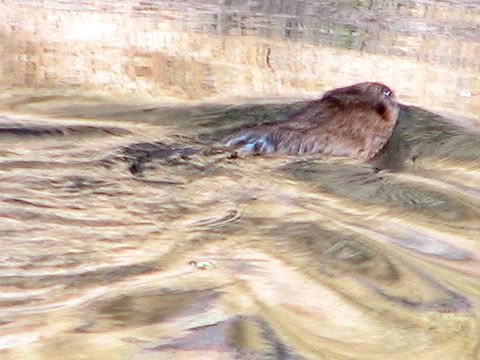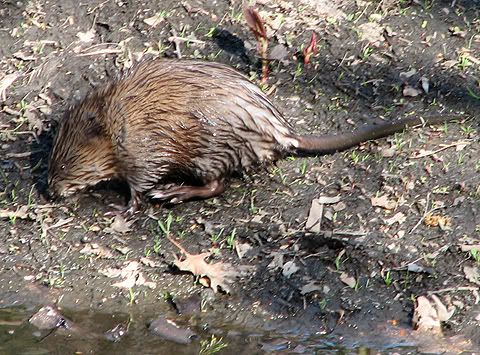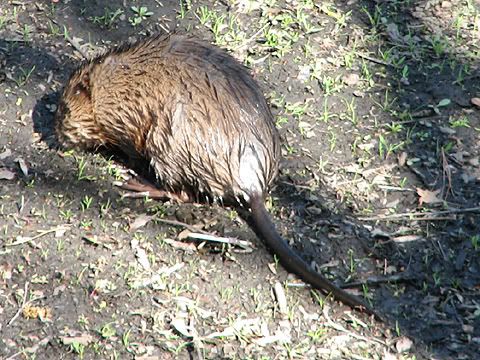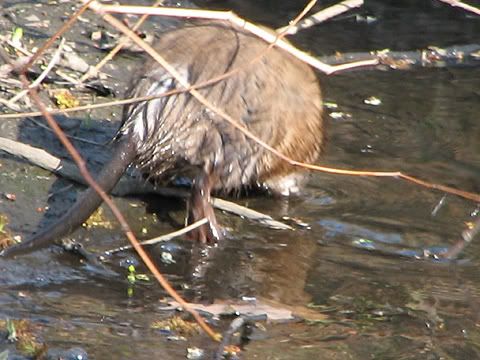365 Urban Species. #117: Muskrat

Photos by cottonmanifesto
Urban species #117: Muskrat Ondatra zibethicus
More than once, an excited friend has reported seeing a beaver or an otter in a waterway in the city. "Really?" I ask, "how big was it?" With their hands they indicate the size of a rabbit--too small to be either. Those animals have habitat requirements that generally preclude them from being thought of as urban species. The muskrat, on the other hand, is a common resident of many cities across North America. Despite its name, the muskrat is more properly called a water vole than any kind of rat. It has a blunt face and long vertically flattened tail for swimming, and on land has a rounder appearance than a rat.
Muskrats are tolerant of fairly polluted water, and need only a muddy bank or even a culvert to build a den in. In an area with adequate aquatic plants they will build a den of vegetation. They feed mostly on plant life, but like most rodents, are somewhat omnivorous, taking mollusks and crustaceans. Urban muskrats are preyed upon by red-tailed hawks, and can drown in their burrows during flooding rains. Their fur was an important part of the North American economy in past years. These days I find they have great value in sparking interest in urban nature.
This time of year they feed on large amounts of maple and oak flowers that fall into the water and onto the riverbanks.
A very similar-looking, but much larger aquatic rodent has been introduced to the Gulf States, and the Pacific Northwest. The nutria, Myocastor coypus, from South America to the United States, and many other countries around the world, to boost fur industries, is about five times as massive as the muskrat. They can be distinguished by their tail, which is round in cross-section, as well as their size: averaging about ten pounds as compared to the less than two pound muskrat. Nutria are urban fixtures in cities like New Orleans, and major ecological problems wherever they are introduced, considered one of the 100 worst invasive species in the world.


